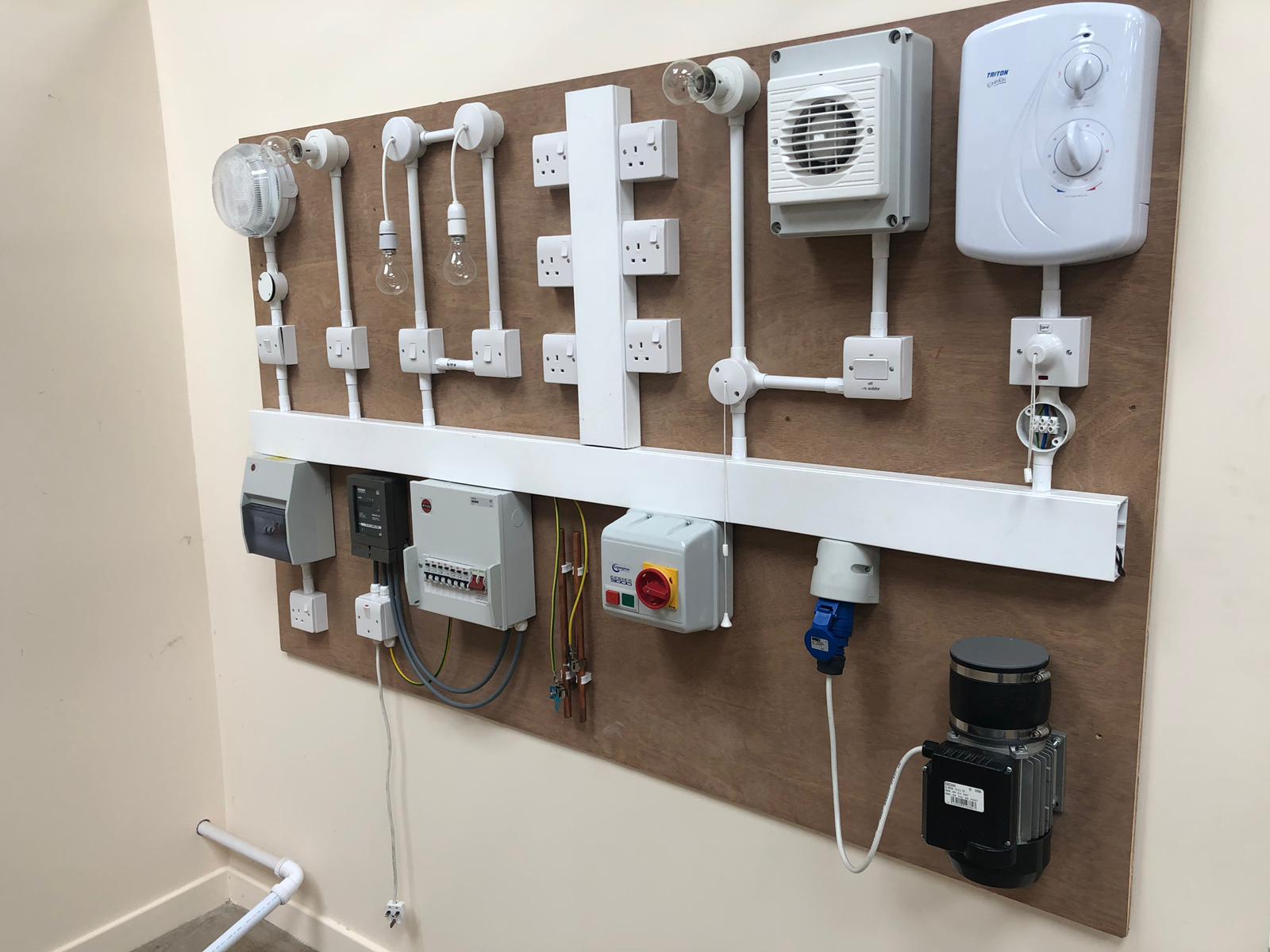Demystifying Electric Installment: Recognizing Codes and Rules for a Legal and Safe Arrangement
In the realm of electric setup, adherence to codes and laws is vital to make sure both legitimacy and safety and security. The complexities bordering electrical work can be challenging, but familiarizing oneself with the recognized criteria is crucial to navigating this field with confidence. By recognizing the intricacies of the National Electric Code and neighborhood building ordinance, individuals can assure that their setups satisfy needed safety measures and remain in compliance with the law. Nonetheless, the trip to demystifying electrical installment goes past simple familiarity with laws; it necessitates an extensive understanding of just how to carry out secure electric methods effectively.
Value of Electric Codes
The adherence to electrical codes is vital in guaranteeing the security and integrity of electrical setups. Electric codes serve as a set of criteria and standards that dictate the correct design, installation, and upkeep of electric systems. These codes are established to minimize the risk of electrical threats, fires, and other security worries that might arise from malfunctioning electric job.

In addition, electrical codes are routinely updated to include new modern technologies, ideal techniques, and precaution. Staying updated with these codes is vital for specialists in the electric sector to guarantee that their job satisfies the most recent safety and security standards. Inevitably, the significance of electrical codes hinges on producing a safe and secure and effective electrical facilities that profits both individuals and areas.
Key Rules for Safety
A number of fundamental policies regulate the security criteria in electrical setups. One key policy is the National Electric Code (NEC), which provides guidelines for secure electric design, setup, and examination to safeguard people and property from electrical threats. The NEC covers elements such as wiring techniques, grounding, overcurrent security, and equipment setup to ensure a secure electric system.
One more important regulation is the Occupational Safety and Wellness Management (OSHA) requirements, which concentrate on the safety and security of workers associated with electric installments (BRE Electrical). OSHA guidelines consist of needs for proper training, safety treatments, and individual protective devices to stop office crashes and injuries
Additionally, the International Electrotechnical Commission (IEC) criteria aim to integrate electric setup laws on a worldwide scale. These criteria address issues like electric devices safety, advice electro-magnetic compatibility, and power performance to promote harmony and security in electrical installments worldwide.
Compliance with these essential guidelines is necessary to make sure the safety and legality of electric setups, shielding both people and property from the threats related to electrical energy.
Understanding National Electric Code
Trick guidelines such as the National Electrical Code (NEC) supply vital standards for risk-free electric style, installment, and assessment to ensure the defense of individuals and residential or commercial property from electric risks. The NEC, additionally understood as NFPA 70, is a thorough set of criteria for electrical setups that are upgraded every three years. It is created by the National Fire Security Organization (NFPA) and is widely taken on across the USA.
The NEC covers numerous elements of electric job, including circuitry methods, grounding, overcurrent security, and tools setup. It intends to safeguard individuals and home by dealing with possible risks connected with electric systems. Conformity with the NEC is generally implemented by neighborhood authorities having jurisdiction (AHJs), such as developing code authorities and assessors.
Recognizing the NEC is critical for electrical service providers, developers, and inspectors to guarantee that setups fulfill the essential safety and security needs. By sticking to the NEC standards, professionals can assist avoid electrical mishaps and make sure the integrity of electric systems in household, business, and commercial setups.

Conformity With Regional Building Codes
Comprehending and sticking to local building codes is crucial for guaranteeing the security straight from the source and conformity of electrical setups within a certain territory. These codes lay out specific requirements for electrical setups, such as the kind of wiring to be utilized, positioning of electrical outlets, grounding methods, and tons capabilities.
When it comes to electrical installments, failure to conform with regional structure codes can result in severe consequences. Non-compliant installations might position safety threats, boost the risk of electric fires, and lead to expensive fines or lawful problems.
Making Certain Safe Electric Practices
Practicing rigorous adherence to established safety methods is critical in the field of electric setups to mitigate possible risks and make over here certain the wellness of people and buildings. Security in electric work incorporates different facets, starting with the correct training of personnel associated with installation, upkeep, and repair. It is vital to follow supplier instructions thoroughly when dealing with electric components and devices. Prior to starting any job, it is important to perform an extensive threat assessment to identify prospective threats and implement safety nets. Utilizing individual protective devices (PPE) such as protected handwear covers, shatterproof glass, and non-conductive footwear is non-negotiable to secure versus electrical shocks and arc flashes. Normal equipment evaluations, screening, and upkeep timetables are indispensable to discover and remedy mistakes prior to they escalate into safety risks. Moreover, adherence to correct lockout-tagout treatments throughout upkeep tasks is critical to stop unintentional energization of circuits. By prioritizing secure techniques, electric setups can work effectively while lessening the probability of mishaps or damage.
Conclusion
Finally, adherence to electric codes and guidelines is important for ensuring the safety and security and legitimacy of electric setups. Understanding the National Electric Code and conformity with local building ordinance are important for a secure configuration. By adhering to these guidelines and exercising risk-free electrical techniques, individuals can stop possible hazards and make sure the correct performance of their electrical systems.